Serait-ce donc parce que la communauté gay francophone, réputée pour ses goûts avant-gardistes, apprécie de plus en plus ce cocktail qu’il s’affirme résolument, en France, comme l’un des cocktails les plus «branchés» du moment ? Ce ne serait, d’ailleurs, que juste mérite, car voilà un cocktail, simple, robuste et riche en saveurs douces, larges et profondes.
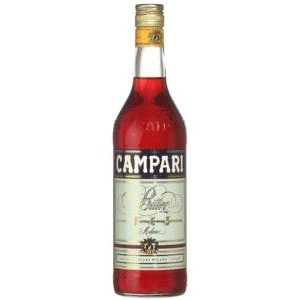 Inutile de résister, je vais vous en parler un peu plus longuement. L’Americano a été inventé en Italie en 1861 au bar de Gaspare Campari, endroit fréquenté par des alcooliques mondains tels que Verdi, Edouard VII ou Ernest Hemingway. Initialement, il était appelé « Milan-Turin » en raison de ses ingrédients: le Campari de Milan et le Vermouth de Turin. Ce n’est que plus tard, alors que les Américains hantaient leurs côtes, que les italiens baptisèrent ce cocktail « Americano » en l’honneur de leurs hôtes de passage. Ces derniers ramenèrent la recette aux USA, tout en l’adaptant à leur goût, c’est à dire avec moins de Vermouth et davantage d’eau gazeuse.
Inutile de résister, je vais vous en parler un peu plus longuement. L’Americano a été inventé en Italie en 1861 au bar de Gaspare Campari, endroit fréquenté par des alcooliques mondains tels que Verdi, Edouard VII ou Ernest Hemingway. Initialement, il était appelé « Milan-Turin » en raison de ses ingrédients: le Campari de Milan et le Vermouth de Turin. Ce n’est que plus tard, alors que les Américains hantaient leurs côtes, que les italiens baptisèrent ce cocktail « Americano » en l’honneur de leurs hôtes de passage. Ces derniers ramenèrent la recette aux USA, tout en l’adaptant à leur goût, c’est à dire avec moins de Vermouth et davantage d’eau gazeuse.
Sachez, également, que le Campari, considéré comme boisson médicinale aux Etats Unis, pouvait être consommé pendant la prohibition. Cela profita directement à la popularité de l’Americano qui s’imposa Outre Atlantique. En 1933, la fin de la prohibition marqua le déclin de l’Americano en tant que cocktail à la mode. Il devint un apéritif, bon enfant, un peu dépassé car moins puissant que le Negroni, sa variante, rapidement plus populaire dans les gosiers yankee. De son côté, Ian Fleming, l’inventeur de James Bond, commit un article ravageur dans lequel il raconta qu’il avait consommé de l’Americano au Fouquet’s à Paris et l’avait trouvé « minablement faible ». Depuis, beaucoup d’américains auraient honte d’en boire en public ! Où donc la bonne conscience va-t-elle parfois se nicher… Mais, bon !, trêve de détails historiques.
Venons-en à l’essentiel, à savoir le cocktail lui même. Sa plus authentique composition est la suivante : 3 cl de Campari, 2 cl de vermouth rouge, 15 cl d’eau gazeuse, un zeste d’orange et de citron et 4 glaçons. Pensez bien à pincer les zestes avant de les déposer dans le verre. Certains buveurs rajoutent un bouchon de gin pour une version plus virile, ou du vermouth blanc pour une version plus soft, ou quelques gouttes d’angostura pour relever d’avantage, ou encore du dry pour une version plus sèche… D’autres boivent l’Americano en short-drink sans eau gazeuse. Vous voyez, ce breuvage, très conciliant, permet d’amples variations. Même les proportions de Vermouth et de Campari peuvent être ajustées selon le degré d’amertume souhaitée. Pour résumer, voilà un cocktail très simple et sympathique entre tous. D’ailleurs, je vais, de ce pas, descendre au bar de l’hôtel pour en déguster un (avec modération !) et vérifier si tout ce que je viens d’écrire sur l’Americano correspond bien à la réalité !
Enfin, cela n’ajoute rien au cocktail, mais je dois vous avouer que Campari est le nom de notre chat !
American way of drink
Could it be because the French-speaking gay community, renowned for its avant-garde tastes, appreciates this cocktail that it is clearly taking its place as one of the coolest cocktails of the moment in France? If this were true, it would be only just reward, because this is a simple and reliable cocktail bursting with gentle, broad and deep flavours.
There is no point trying to resist, I am going to talk to you at length about it! The Americano was invented in Italy in 1861 at the bar of Gaspare Campari, a place frequented by high society alcoholics such as Verdi, Edward VII and Ernest Hemingway. It was originally called a ‘Milano-Torino’ due to its ingredients: Campari from Milan and Vermouth from Turin. It was only later, when the Americans came to their coasts, that the Italians called this cocktail ‘Americano’ in honour of their momentary guests. The latter took the recipe back home with them to the USA, while adapting it to their taste, in other words with less Vermouth and more soda.
Another interesting fact is that Campari was considered as a medicinal drink in the United States and was therefore permitted during the prohibition. This had a direct effect on the popularity of the Americano which became a favourite in the US. But in 1933, the end of the prohibition marked the beginning of the Americano’s fall from grace as a fashionable cocktail. It became a casual aperitif, somewhat overtaken by its more powerful variant the Negroni, which quickly became more popular with the Yankees. Meanwhile, Ian Fleming, the inventor of James Bond, wrote a viscous article in which he told the story of having tried an Americano at the Fouquet’s restaurant in Paris and having found it “pathetically weak”. After that, many Americans were ashamed to drink it in public! To what lengths would people go to find good conscience! Anyway, that’s enough for the historic details.
Let’s get down to the heart of the matter, in other words the cocktail itself. The most authentic recipe is as follows: 3cl of Campari, 2cl of red vermouth, 15cl of soda water, a zest of orange and lemon and 4 ice cubes. Remember to pinch the zests for added flavour before adding them to the glass. Some people add a splash of gin for a more virile version, or white vermouth for a gentler taste, or a few drops of Angostura bitter to give it more bite, or dry martini for a dryer taste… Others prefer the Americano as a short drink without soda. As you can see, this adaptable drink can lend itself to lots of variations. Even the proportions of Vermouth and Campari can be adjusted depending on the degree of bitterness desired. To sum up, it is one of the easiest and most pleasant cocktails around. In fact, I am going to go straight down to the hotel bar to sample one (responsibly!) and to check the accuracy of everything that I have just written about the Americano!
Lastly, this doesn’t add anything to the cocktail but I just had to tell you that Campari is the name of our cat!
Didier MOINEL DELALANDE


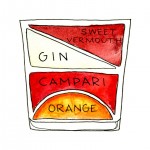
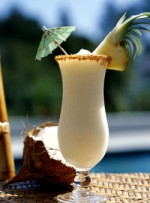
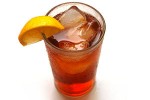
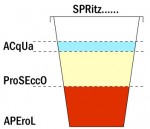
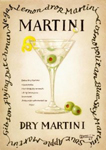

Un commentaire pour “American way of drink”